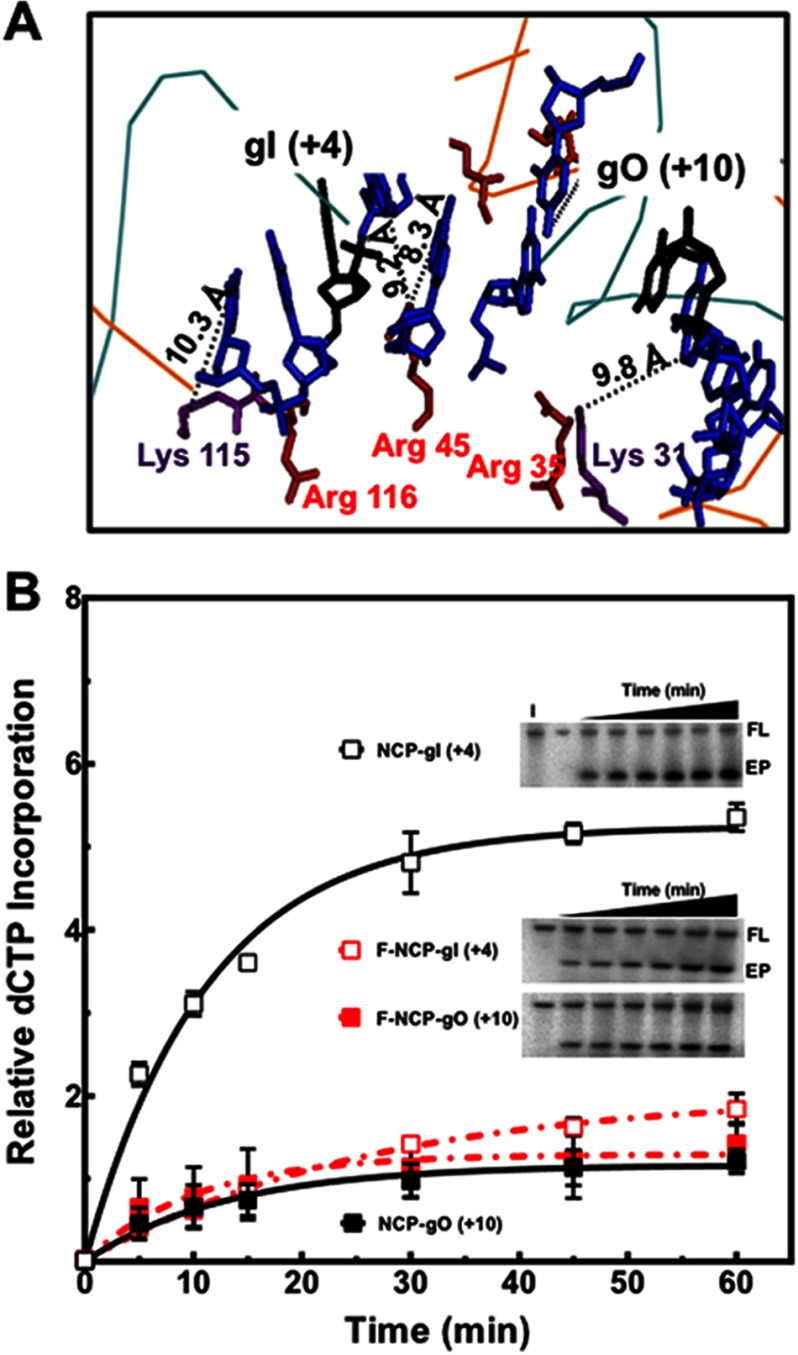FIGURE 5.
Effect of formaldehyde cross-linking on polymerase β extension activity in NCPs near the dyad. A, MacPyMOL2 was used to measure the distance between atoms where cross-linking is more likely to occur due to proximity. As shown, there is a predominance of arginines (red) near cross-linkable DNA sites (A, C, and G shown in blue). Because the flanking sequence of gI (+4) faces the histone octamer, this area is in closer proximity for cross-linking than the outwardly oriented DNA regions near gO (+10). B, plot of the mean ± 1 S.D. of three independent experiments of pol β extension activity on cross-linked and noncross-linked NCPs containing a single nucleotide gap. Representative gels show gap filling activity of pol β, which was monitored as the appearance of [α-32P]dCTP. The signal in the extension product (EP) was normalized to the signal of the full length (FL) after background subtraction of each band. The negative control, intact (I), corresponds to NCP-UI (+4), incubated with pol β and [α-32P]dCTP for 60 min at 37 °C. Data points were fitted to a single phase exponential equation as described under “Experimental Procedures.” The initial rates of relative dCTP incorporation/min were calculated from the kinetic fits for cross-linked and noncross-linked NCPs and gave values of 0.47 ± 0.03, 0.08 ± 0.01, 0.09 ± 0.02, and 0.13 ± 0.04 for NCP-gI (+4), F-NCP-gI(+4), NCP-gO (+10), and F-NCP-gO (+10), respectively. For data points where the error bars are not visible, the standard deviations were smaller or similar in magnitude to the size of the symbols.

